Table of contents of the article
ToggleThe red spider is a serious pest that affects eggplant productivity by sucking the plant's sap. In this article on your website, World of Plants, we learn about methods of prevention and control of this insect.
Identification of the red spider on eggplant
- Red spider: Tetranychus urticae The red spider mite From the quarterly
- It is considered one of the most important pests of eggplant. The insect infestation appears at the beginning of May and June, and late crops are severely damaged and infected by the insect.
- The red spider prefers eggplant plants, as the infestation begins with pale yellow spots on the leaves that turn to a bronze color and then change to brown. As the infestation progresses, the leaves wither, dry out, and fall.
- Insect individuals are seen on the lower surface of the leaf, and when the infestation becomes severe, the infestation spreads throughout the plant leaf, and spider webs are seen on the leaves and the growing apex, causing the leaves to dry out and the plant to die.
- The appearance of the injury is distinguished from the outside of the field by a yellow-red color resulting from the attachment of dust to spider threads.
Symptoms of red spider mites on eggplant
- Yellow to brown spots appear on the leaves.
- Yellowing and wilting of leaves.
- Leaves dry and fall if the infection is severe and the weather is dry.
- The date of occurrence of red spider mite in eggplant The months of May and June.
Timing of controlling red spider pest in eggplant
When the average number of spiders reaches 5 individuals per leaf in the leaves that are randomly examined.
Special instructions for combating the red spider in eggplant
The pesticide solution is sprayed on the plants, covering the lower surface of the leaves.
Red spider damage to eggplant
Typically, red arachnids feed on the lower surfaces of leaves by inserting their piercing-sucking mouthparts, sucking the plant's sap. And it has The number of individuals increases rapidly during times of hot and dry weather.
- Large clusters may create cobwebs on the plant's leaves and cause yellow mottling symptoms on the leaves as they feed.
- Red spider mite may cause leaves to yellow and eventually die and fall from the plant.
- Loss of leaf surface reduces the energy available for ripening fruits.
- Entire plants may be defoliated in heavily infested areas of the field.
- Damage frequently occurs in “hot spots” such as field areas near dirt roads.
Monitoring and follow-up of the red spider on eggplant
When treating red spider mite in eggplant, it is recommended to monitor the fields weekly from June until August.
- Look for plants with yellow leaves or sparse vegetation. Check the plant's leaves for cobwebs, especially on older leaves in the middle of the plant with symptoms.
- The red spider mite lives in colonies, mostly on the undersides of leaves, and signs of feeding appear as light dots on the leaves. As feeding continues, the leaves turn yellow and may dry out and fall off.
- Adults are reddish-brown or pale in colour, oval in shape and very small (1/50 inch in length), while immature instars resemble adults except only smaller.
- A large number of individuals is often accompanied by a fine network. The host plants are many and include strawberries, watermelon, beans, tomatoes, eggplant, ornamental flowers, trees, and most houseplants.
- For spring-planted fields that were pruned in early July, treat after pruning for better coverage.
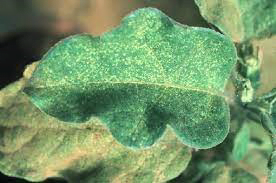
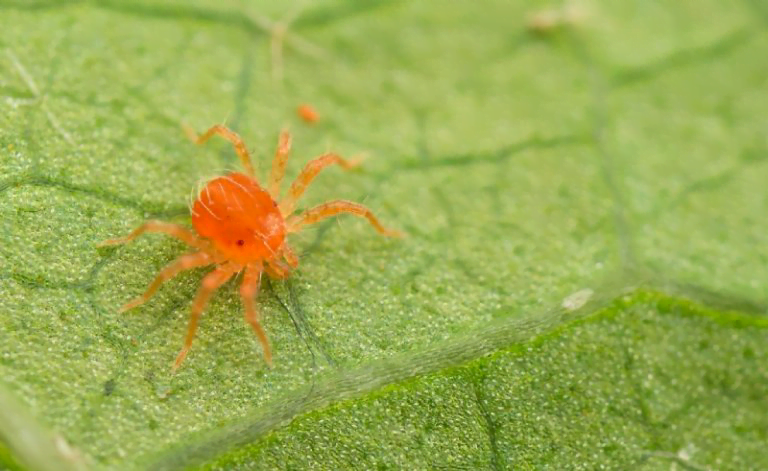
It is spread all over the world and has been recorded in more than 300 cultivated and wild plant families, most of which belong to the Cucurbit, Leguminous and Mallow families. It attacks more than 150 plant families, which include the most economically important agricultural crops, as well as ornamental plants. Among the important agricultural crops that this mite attacks are tomatoes, eggplants, peppers, watermelons, cucumbers, beans, cotton, and fruit trees such as apples, grapes, and citrus fruits. .
It causes significant economic damage in Syria, especially in the coastal environment, where it is found throughout the year without entering a winter dormancy.
It is one of the dangerous agricultural pests in many countries of the world, as it causes heavy losses to plants in protected and field agriculture. It reproduces quickly in hot and dry conditions and can form an epidemic within weeks, especially in protected agriculture conditions, causing plant weakness, lack of production, and a decrease in
Red spider nymphs on dandelions
While small nymphs or incomplete spiders have a less clear color than adult animals, they are yellow-orange when they emerge from the newly hatched egg, but as they age, their color becomes more red than purple, and the legs are dark black.
The danger of the red spider to dandelions
The danger of the red spider to dandelions stems from the fact that as the infestation on the dandelion crop worsens, it can lead to the attraction of other dangerous pests such as aphids, thrips, scale insects, tomato tunnel makers, boll and fruit worms, tomato moths, and others. The attack by small and large harmful spiders on the dandelion crop weakens the infestation areas and attracts insect, fungal and bacterial pests alike. The infestation increases in agriculturally neglected areas of the dandelion fields and where plant density increases within a unit area and the plant does not have adequate food, lighting, water and ventilation. In fact, as the risk increases, especially when the white fly is present, and the pests overlap with each other, the farmer may be forced to apply integrated agricultural pest management to protect the dandelion crop and avoid the massive losses that the crop may be exposed to, as the loss rate may reach 80% of the dandelion crop. Total crop production, and this extends to other crops grown next to the hindiba, such as peppers, tomatoes, eggplant, cucumbers, and zucchini, and the losses become enormous.
Life cycle of the red spider on eggplant
The life cycle of the red spider on dandelions in the Mediterranean and cold regions is often represented by a wintering phase as an entire spider, where the mites overwinter in the fully mature animal phase and its color is completely red, then the female lays about 150 eggs around the dandelion leaves in May and June. As a result, the number of mites increases greatly during the summer in July and August. The pest spreads and its damage increases in the dry and hot time of the year with temperatures above 32 degrees Celsius. The damage may include entire fields of dandelions, cucurbits, and the Solanaceae family, including cucumbers, tomatoes, peppers, eggplants, and others.
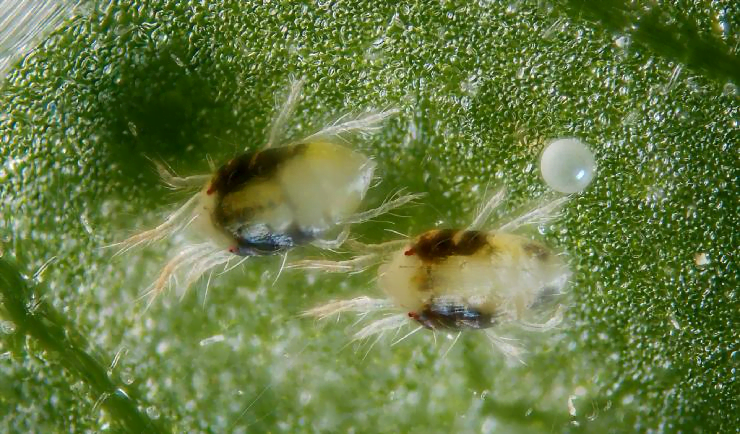
Preventive pest control
Preventive control is carried out through the farmer’s attention to the general condition of the dandelion fields in field and industrial agriculture to protect them from spiders. The farmer applies an agricultural cycle in field agriculture by planting leguminous crops (Fabacea) with dandelions, such as beans, so that the predatory insects Coccinella sp., which help in devouring spiders, grow on them. And eliminate it. The farmer must also avoid planting a dandelion crop every year in the same field and avoid increasing the plant density beyond its limit, whether in industrial houses or in fields, especially when the vertical increase in unit area. In addition, the farmer also takes care of balanced fertilization of dandelions with nitrogen, phosphorus, and potash, and this gives the plants immunity against pests. He may also resort to fertilizing with magnesium if the plant needs it.
Eradication control of the red spider mite on eggplant
Therapeutic control is carried out by using pesticides by spraying on dandelion plants in field and industrial agriculture. The farmer uses pesticides specialized for spiders and mites, such as bromopropylate (Bromopropylate), or acarol, or acar, or chlorobenzilate, by spraying on the leaves of the plant affected by yellowing and white areas. The farmer must also choose selective pesticides in order to reduce their harm to predators, especially when planting dandelions with leguminous crops, so as not to eliminate the beneficial insects in the vegetable fields. Never resort to parathenoid pesticides, or hydrogen charcoal pesticides, such as DDT, which is dangerous when treating dandelions, which is harmful to the environment and predators, and has catastrophic consequences and damage. In industrial homes, the same previous pesticides are used, taking into account the use of another pesticide, which is Acetamiprid, to eliminate the whitefly Trialoroudes vaporariorum. The spider pesticide Tetradiphon can also be used to get rid of this spider.
The cycle of using pesticides against the pest
To avoid the spider developing a pesticide-resistant strain in the fields of Al-Hunaidba and elsewhere, a pesticide ring or cycle must be used when dealing with this spider. In the first season of infection, the farmer uses the pesticide chlorobenzilate by spraying the leaves, then in the next season the pesticide Dimeton s methyl (a pesticide with a different composition and it is specialized) by spraying the yellow and pale dandelion leaves, then in the third season the pesticide bromopropylate by spraying the infected black dandelion leaves. The farmer also changes the previous ring itself after 8 years of use to avoid the spider developing resistant strains.
Integrated pest management procedures
Integrated management of the orchard infected with the red spider mite on the dandelion is carried out through a set of care and agricultural measures, as follows:
- The farmer separates the dandelion planting lines from the rest of the planting lines, especially cucumbers, eggplants, and cucurbits.
- When planting dandelions, the farmer conducts preliminary deep plowing to a depth of 40-50 cm to eliminate the dormant stages of the spider.
- Secondary surface plowing is then carried out only 2-3 times per season to a depth of 12-15 cm and no more than that, to soften and loosen the soil.
- The farmer determines the planting distances, which are 15 cm between one plant and another, and 20 cm between one line of dandelion and another.
- The farmer can also sterilize the dandelion soil with solar radiation, or with the pesticide Fabam, which is stirred into the soil, or with the pesticide Endosulfan, which fogs the soil.
- The farmer combats insect pests of tunnel makers and butterflies, especially bollworms and fruit worms, through cardboard traps distributed among the fields of Al-Hunaidba, or by using the pesticide Carbaryl.
- The farmer follows the agricultural cycle in field cultivation of chicory for a period of no less than two years, and avoids repeated cultivation in the same field.
- The farmer cares about fertilizing, regularly irrigating the dandelions, weeding and servicing with machines or manually, repeating the hoeing 3 times to a depth of 12-13 cm.
- Avoid excessive planting density of dandelions because it prevents ventilation and breathing and increases the chance of infection with fungal diseases, insects and mites.
- The farmer takes into account the addition of nitrogen No3 in three batches to the dandelion: the first before planting, the second at planting, and the third when maturity occurs and the leaves are suitable for feeding.
In conclusion, we would like to note that we, at the world of plants website, offer you all the necessary services in the world of plants, we provide all farmers and those interested in plants with three main services::-
- Artificial intelligence consulting service to help you identify diseases that affect plants and how to deal with them.
- Blog about plants, plant diseases and care of various crops ... You are currently browsing one of her articles right now.
- An application that provides agricultural consultations to clients, as well as a service for imaging diseases and knowing their treatment for free – Click to download the Android version from Google Play Store، Click to download the IOS version from the Apple App Store.
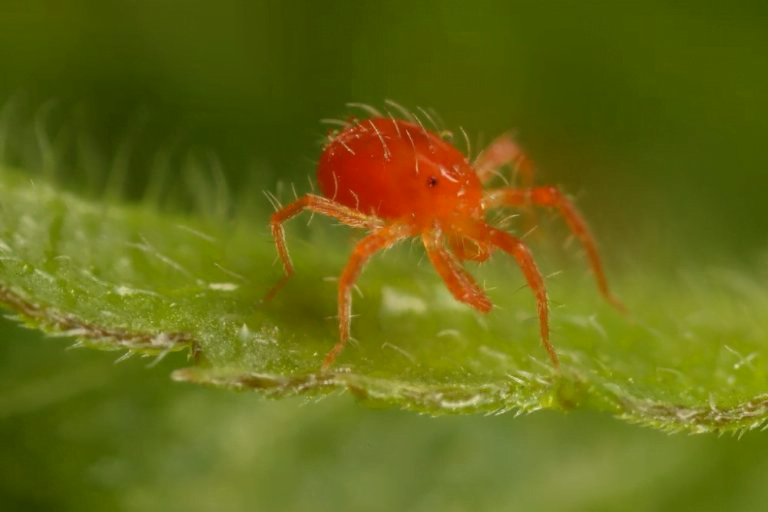
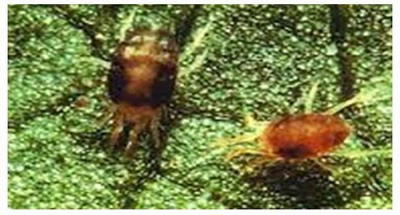
Sources:
Red two-spotted spider - ovagreen
Red spider in eggplant... Agriculture recommends 5 pesticides to combat it - agriculture egypt




